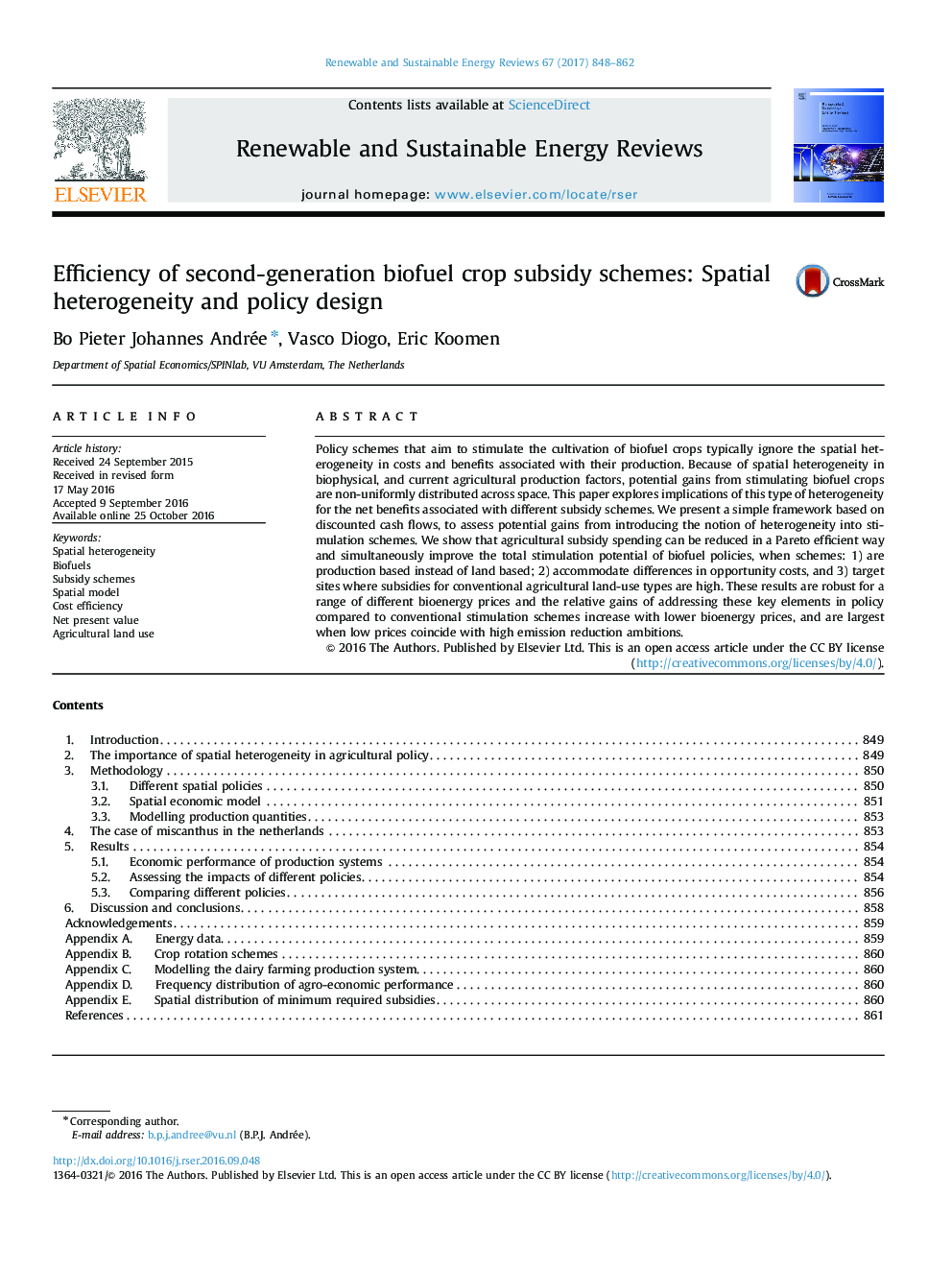| Article ID | Journal | Published Year | Pages | File Type |
|---|---|---|---|---|
| 5482773 | Renewable and Sustainable Energy Reviews | 2017 | 15 Pages |
Abstract
Policy schemes that aim to stimulate the cultivation of biofuel crops typically ignore the spatial heterogeneity in costs and benefits associated with their production. Because of spatial heterogeneity in biophysical, and current agricultural production factors, potential gains from stimulating biofuel crops are non-uniformly distributed across space. This paper explores implications of this type of heterogeneity for the net benefits associated with different subsidy schemes. We present a simple framework based on discounted cash flows, to assess potential gains from introducing the notion of heterogeneity into stimulation schemes. We show that agricultural subsidy spending can be reduced in a Pareto efficient way and simultaneously improve the total stimulation potential of biofuel policies, when schemes: 1) are production based instead of land based; 2) accommodate differences in opportunity costs, and 3) target sites where subsidies for conventional agricultural land-use types are high. These results are robust for a range of different bioenergy prices and the relative gains of addressing these key elements in policy compared to conventional stimulation schemes increase with lower bioenergy prices, and are largest when low prices coincide with high emission reduction ambitions.
Keywords
Related Topics
Physical Sciences and Engineering
Energy
Renewable Energy, Sustainability and the Environment
Authors
Bo Pieter Johannes Andrée, Vasco Diogo, Eric Koomen,
